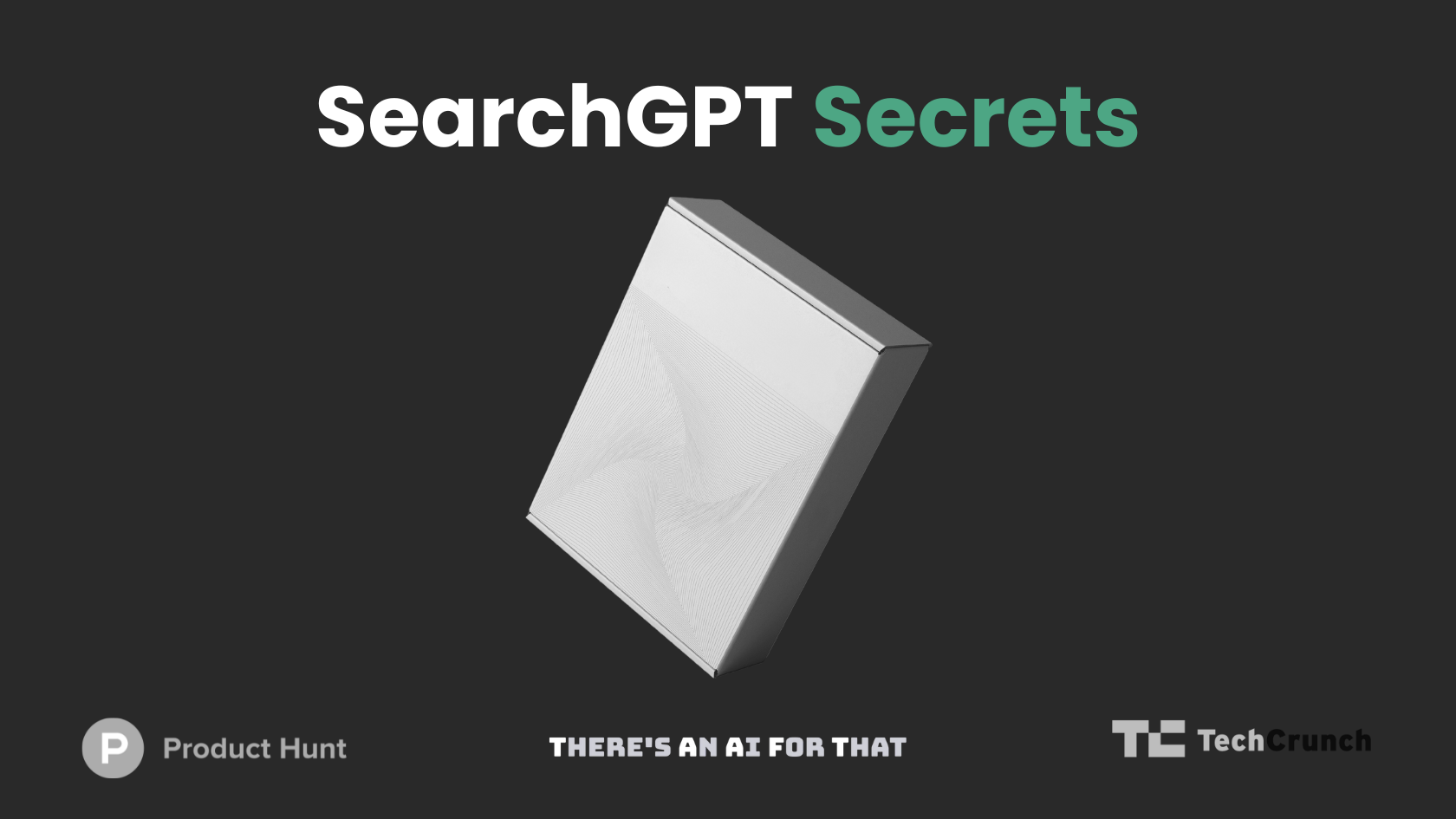In the rapidly evolving landscape of digital information, the need for efficient data retrieval and organization has never been more critical. Knowledge Graphs, which serve as structured representations of information, play a pivotal role in how data is interconnected and accessed. They enable search engines and applications to understand the relationships between various entities, thereby enhancing the user experience by delivering more relevant results.
By leveraging natural language processing and machine learning capabilities, SearchGPT can significantly improve the way knowledge is structured, queried, and utilized. SearchGPT operates at the intersection of artificial intelligence and semantic web technologies, providing a robust framework for enhancing Knowledge Graphs.
Its ability to process vast amounts of unstructured data allows it to identify patterns and relationships that may not be immediately apparent. This capability is particularly valuable in an era where information overload is commonplace. As organizations strive to harness the power of their data, integrating SearchGPT into Knowledge Graph optimization strategies can lead to more intuitive and effective information retrieval systems.
Key Takeaways
- SearchGPT is a powerful tool for optimizing knowledge graphs, leveraging AI to improve search results and user experience.
- AI plays a crucial role in knowledge graph optimization by analyzing and understanding complex relationships between entities and providing more relevant and accurate information.
- Using SearchGPT for knowledge graph optimization can lead to improved search relevance, better user engagement, and enhanced decision-making processes.
- Challenges and limitations of AI-powered knowledge graph optimization include data biases, privacy concerns, and the need for continuous monitoring and updates.
- The future of AI-powered knowledge graph optimization holds promise for more advanced and efficient systems, but ethical considerations must be carefully addressed to ensure responsible and fair use of AI technology.
Understanding the Role of AI in Knowledge Graph Optimization
Artificial intelligence plays a transformative role in the optimization of Knowledge Graphs by automating processes that were traditionally manual and time-consuming. One of the primary functions of AI in this context is entity recognition, where algorithms can identify and categorize entities within large datasets. For instance, AI can analyze text from various sources—such as articles, social media posts, and databases—to extract relevant entities like people, places, and concepts.
This automated extraction not only saves time but also enhances the accuracy of the Knowledge Graph by ensuring that it reflects the most current and comprehensive information available. Moreover, AI facilitates the continuous updating and maintenance of Knowledge Graphs. As new information emerges or existing data changes, AI algorithms can automatically adjust the graph to reflect these updates.
This dynamic capability is crucial for organizations that rely on real-time data for decision-making. For example, in the healthcare sector, AI can help maintain a Knowledge Graph that tracks patient information, treatment protocols, and research findings, ensuring that healthcare professionals have access to the latest insights. By employing AI in Knowledge Graph optimization, organizations can create a more agile and responsive data ecosystem.
The Benefits of Using SearchGPT for Knowledge Graph Optimization

The integration of SearchGPT into Knowledge Graph optimization strategies offers numerous advantages that can significantly enhance data management practices. One of the most notable benefits is its ability to improve query understanding. Traditional search engines often struggle with ambiguous queries or complex user intents.
For instance, if a user searches for “best practices in renewable energy,” SearchGPT can discern the intent behind the query and retrieve relevant information from various nodes within the Knowledge Graph. Additionally, SearchGPT enhances the contextual relevance of search results by leveraging its understanding of relationships between entities.
This means that when users seek information about a specific topic, they are not only presented with direct answers but also with related concepts that enrich their understanding. For example, a query about “climate change” could yield results that include related topics such as “carbon footprint,” “renewable energy sources,” and “government policies.” This interconnected approach not only improves user satisfaction but also encourages deeper exploration of related subjects.
Challenges and Limitations of AI-Powered Knowledge Graph Optimization
Despite the promising capabilities of AI-powered Knowledge Graph optimization, several challenges and limitations must be addressed to fully realize its potential. One significant challenge is data quality. The effectiveness of any Knowledge Graph is heavily reliant on the accuracy and reliability of the underlying data.
If the data fed into SearchGPT contains inaccuracies or biases, these issues will propagate throughout the Knowledge Graph, leading to misleading conclusions or erroneous search results. Organizations must implement robust data validation processes to ensure that only high-quality information is incorporated into their Knowledge Graphs. Another limitation lies in the interpretability of AI models like SearchGPT.
While these models can produce impressive results, understanding how they arrive at specific conclusions can be opaque. This lack of transparency poses challenges for organizations that require accountability in their data-driven decisions. For instance, if a healthcare provider relies on an AI-optimized Knowledge Graph to inform treatment plans, they must be able to trust that the recommendations are based on sound reasoning rather than black-box algorithms.
Developing explainable AI solutions that provide insights into how decisions are made will be crucial for overcoming this barrier.
The Future of AI-Powered Knowledge Graph Optimization
Looking ahead, the future of AI-powered Knowledge Graph optimization appears promising as advancements in technology continue to unfold. One potential direction is the increased integration of multimodal data sources into Knowledge Graphs. As organizations gather data from diverse channels—such as text, images, audio, and video—AI models like SearchGPT will need to adapt to process and synthesize this information effectively.
This evolution could lead to richer and more comprehensive Knowledge Graphs that provide users with a holistic view of complex topics. Furthermore, as AI technologies become more sophisticated, we can expect improvements in personalization within Knowledge Graphs. By analyzing user behavior and preferences, AI can tailor search results to individual needs, creating a more engaging user experience.
For example, an educational platform could utilize personalized Knowledge Graphs to recommend resources based on a student’s learning history and interests. This level of customization not only enhances user satisfaction but also fosters deeper learning by connecting users with relevant content.
Ethical Considerations in Using AI for Knowledge Graph Optimization

Data Privacy and Compliance
As AI systems process vast amounts of personal information to enhance Knowledge Graphs, ensuring compliance with data protection regulations becomes crucial. Organizations must implement stringent measures to safeguard user data while still leveraging it for optimization purposes. Transparency in how data is collected, used, and stored will be essential in building trust with users.
Bias in AI Algorithms
Another ethical consideration involves bias in AI algorithms. If not properly managed, biases present in training data can lead to skewed representations within Knowledge Graphs. For instance, if an AI model is trained predominantly on data from specific demographics or regions, it may inadvertently marginalize other perspectives or communities.
Fostering Inclusivity and Fairness
To mitigate this risk, organizations should prioritize diversity in their training datasets and actively seek out underrepresented voices in their Knowledge Graphs. By fostering inclusivity and fairness in AI-driven optimization efforts, organizations can create more equitable knowledge systems.
Implementing SearchGPT in Knowledge Graph Optimization Strategies
To effectively implement SearchGPT in Knowledge Graph optimization strategies, organizations should adopt a systematic approach that encompasses several key steps. First and foremost, it is essential to define clear objectives for what they aim to achieve with their Knowledge Graphs. Whether the goal is to enhance search functionality, improve data integration, or facilitate better decision-making processes, having a well-defined purpose will guide subsequent efforts.
Next, organizations should focus on curating high-quality datasets that will serve as the foundation for their Knowledge Graphs. This involves not only gathering relevant information but also ensuring its accuracy and reliability through rigorous validation processes. Once a solid dataset is established, integrating SearchGPT into the optimization workflow can begin.
This may involve training the model on specific domain knowledge or fine-tuning it to align with organizational needs. Collaboration among cross-functional teams is also crucial during implementation. Involving stakeholders from IT, data science, and domain expertise ensures that diverse perspectives are considered throughout the optimization process.
Regular feedback loops should be established to assess the effectiveness of SearchGPT in enhancing the Knowledge Graph and make necessary adjustments based on user interactions and outcomes.
The Potential Impact of SearchGPT on Knowledge Graph Optimization
The integration of SearchGPT into Knowledge Graph optimization represents a significant advancement in how organizations manage and utilize their data resources. By harnessing the power of artificial intelligence, organizations can create more intuitive and responsive knowledge systems that cater to user needs while addressing challenges related to data quality and bias. As technology continues to evolve, so too will the capabilities of AI-driven solutions like SearchGPT.
The potential impact extends beyond mere efficiency gains; it encompasses improved decision-making processes across various sectors—from healthcare to education and beyond. As organizations embrace these innovations responsibly and ethically, they will unlock new opportunities for knowledge sharing and collaboration in an increasingly interconnected world. The journey toward optimizing Knowledge Graphs with AI is just beginning, but its implications are poised to reshape how we interact with information for years to come.
In a recent article on SearchGPT and the Future of AI-Powered Knowledge Graph Optimization, Neil Patel shared his reactions to the SearchGPT prototype. He discussed the potential impact of this technology on search engine optimization and how it could revolutionize the way we approach content creation and optimization. To read more about Neil Patel’s thoughts on SearchGPT, check out this article.
FAQs
What is SearchGPT?
SearchGPT is an AI-powered tool developed by OpenAI that uses the GPT-3 language model to optimize knowledge graphs and improve search engine results.
How does SearchGPT work?
SearchGPT works by analyzing and understanding the relationships between entities in a knowledge graph, and then using this information to enhance search engine performance and provide more accurate and relevant search results.
What is a knowledge graph?
A knowledge graph is a structured representation of information that shows the relationships between different entities, such as people, places, and things. It is used to organize and connect data in a way that is easily understandable by both humans and machines.
How does AI-powered knowledge graph optimization benefit search engines?
AI-powered knowledge graph optimization can benefit search engines by improving the accuracy and relevance of search results, enhancing the user experience, and enabling more efficient information retrieval.
What is the future of AI-powered knowledge graph optimization?
The future of AI-powered knowledge graph optimization is likely to involve further advancements in natural language processing, machine learning, and data analysis, leading to even more sophisticated and effective tools for organizing and optimizing knowledge graphs.

